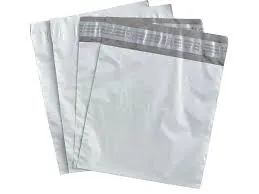Exploring Versatile Stretch Film for Packaging and Securing Products Efficiently
The Versatility of Stretch Wrap Material
In today's fast-paced industrial and commercial environments, effective packaging solutions are paramount. One such solution that has gained immense popularity is stretch wrap material. This plastic film, known for its exceptional elasticity and toughness, has become a staple in warehouses, distribution centers, and retail settings across the globe. In this article, we will explore the characteristics, benefits, and various applications of stretch wrap material.
Stretch wrap material, made from linear low-density polyethylene (LLDPE), is highly stretchable and capable of enduring significant tension without breaking. This property makes it ideal for bundling products together, providing a snug fit that prevents shifting during transport. The film’s ability to cling to itself without adhesives further enhances its usability, creating a secure barrier that protects items from dust, moisture, and damage.
One of the primary benefits of using stretch wrap material is its versatility. It comes in various thicknesses and widths, making it customizable to suit different packaging needs. From small bundles of goods to large pallets, stretch wrap can accommodate a broad range of products, from fragile items like glassware to heavier machinery. Moreover, clear stretch wrap allows for visibility of the packaged items, which is crucial for inventory management and identification during shipping.
stretch wrap material

In addition to its protective qualities, stretch wrap material is also known for its cost-effectiveness. Its lightweight nature reduces shipping costs, as lighter packages often translate to lower freight expenses. Furthermore, the ability to stretch the film means that less material is needed to secure a load, making it an economical choice for businesses aiming to cut costs without compromising quality.
Sustainability is an increasing concern in the packaging industry, and stretch wrap material has evolved to meet these demands. Many manufacturers are now producing eco-friendly stretch wraps made from recycled materials or designing films that are recyclable themselves. This shift toward sustainable practices allows businesses to reduce their environmental footprint while still utilizing effective packaging solutions.
The applications of stretch wrap material extend beyond typical warehousing and shipping scenarios. In retail, it’s often used for bundling products together or securing items during transit. In agriculture, farmers use stretch wrap to protect their goods, such as hay bales, from adverse weather conditions. Moreover, stretch wrap technology has advanced to include specialized films for specific industries, including industrial, food packaging, and medical applications.
In conclusion, stretch wrap material has established itself as an indispensable tool in packaging and logistics. Its unique properties offer a blend of strength, adaptability, and cost-effectiveness that few other materials can match. As sustainability becomes increasingly important to businesses and consumers alike, the development of eco-conscious stretch wraps is a promising trend. Whether used in warehouses, retail environments, or agriculture, stretch wrap material continues to prove its worth as a reliable solution for a multitude of packaging challenges. This ingenuity and resilience make it a vital component of modern supply chains, supporting the seamless movement of goods in various sectors.
-
The Best Uses for Small Trash Bags in Daily LifeNewsJul.01,2025
-
Stylish Reusable Grocery Bags TrendsNewsJul.01,2025
-
Shipping Advantages of Using Bubble Envelopes BulkNewsJul.01,2025
-
How Compostable Mailing Bags Reduce Environmental ImpactNewsJul.01,2025
-
Environmentally - Friendly Bulk Poly MailersNewsJul.01,2025
-
Eco Friendly Custom Laminated Tote BagsNewsJul.01,2025
-
Have the freedom of customizing your custom mailers any way you want! Our dedicated packaging support will help deliver you the mailing experience you need to elevate your shipping experience to the next level! Start making a strong impression on your customers and stand out from your competitors! -
LIYA uses high quality raw materials which directly purchased from large enterprises domestic and overseas such as PetroChina, Sinopec, Sabic, Equate, ExxonMobil, Dow Chemical, Total, and Borouge, ensuring the price advantage and quality of the raw materials. -
LIYA uses high quality raw materials which directly purchased from large enterprises domestic and overseas such as PetroChina, Sinopec, Sabic, Equate, ExxonMobil, Dow Chemical, Total, and Borouge, ensuring the price advantage and quality of the raw materials.





